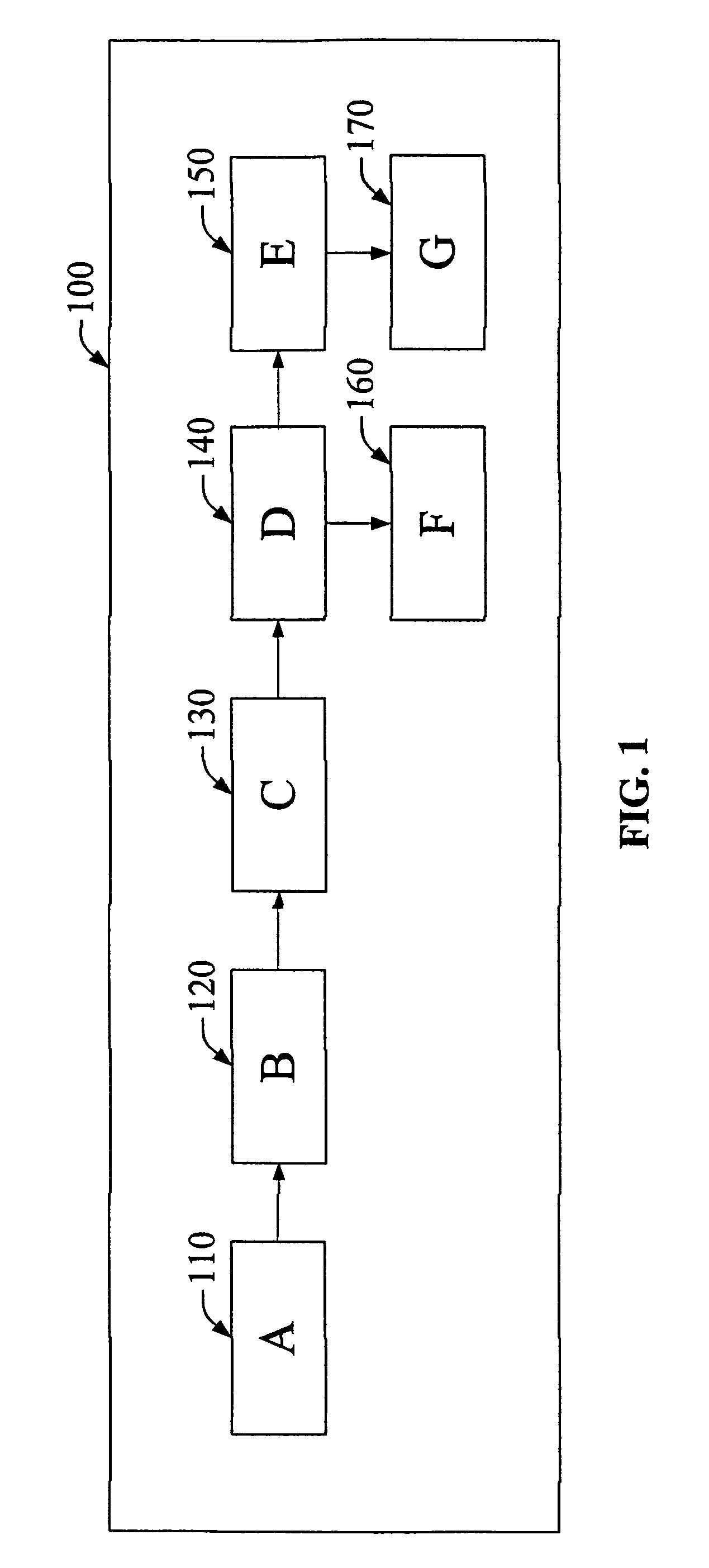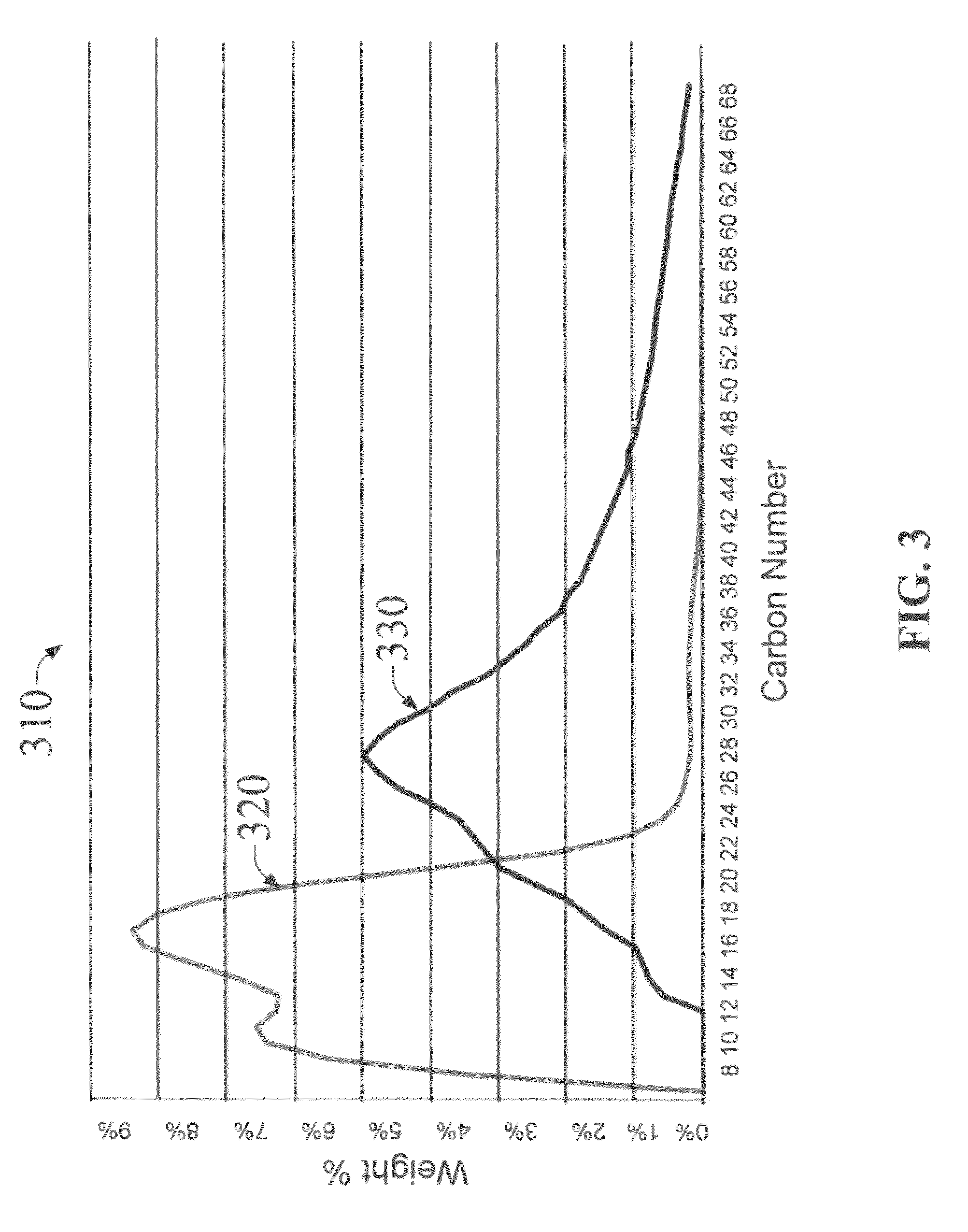Catalytic process for the direct production of hydrocarbon fuels from syngas
- Summary
- Abstract
- Description
- Claims
- Application Information
AI Technical Summary
Benefits of technology
Problems solved by technology
Method used
Image
Examples
example # 1
EXAMPLE #1
[0084]Supported catalysts are prepared using an incipient wetness procedure whereby cobalt and promoter metals are impregnated on a gamma alumina, quad-lobed support with a mean effective pellet radius of 0.25 mm and a mean pore diameter of 130 Angstroms. The surface area of the catalyst is 110 m2 / g as measured by BET / N2 physisorption technique. The crush strength of the catalyst is 4 lbs / mm. Drying and calcination steps are used in the production process to produce a catalyst with 20 wt % cobalt and 0.3 wt % platinum promoter. Following the production of the supported catalysts, the supported catalysts are loaded in a multi-tubular fixed bed reactor of a tube in shell design with 1″ (2.54 cm) diameter tubes. The catalyst is reduced with hydrogen at 75 psig and at a temperature less than 550° F. which are operating conditions that can be achieved in a fixed bed reactor that can be manufactured inexpensively.
[0085]In an alternative embodiment, the catalyst is reduced with a...
example # 2
EXAMPLE #2
[0090]In this example, improved cold flow properties of the diesel fuel fraction are desired. The same catalyst system and processes are used as described above in Example #1. Following the catalyst synthesis process, the diesel fuel fraction is contacted with a catalyst that performs isomerization under mild operating conditions, while minimizing cracking functions. In this example, the catalyst used is a platinum promoted tungstate-modified zirconia.
[0091]In this example, a trickle bed reactor is used; however, other known reactors can be used as well. The reactor is operated in a pressure range of about 100 psi to about 400 psi, ideally at 150 psi in a temperature range of about 350° F. to about 600° F., preferably at 425° F. The H2 / diesel fuel molar ratio is estimated using C16 (hexadecane) as an average compound of the diesel fuel and the H2 / n-C16 ratio is in the range of 1.5-5, preferably equal to 2 (therein requiring 22 standard cubic feet of H2 per gallon of n-C16 ...
example # 3
EXAMPLE #3
[0093]The cold flow properties of a diesel fuel fraction are improved by splash blending the diesel fuel fraction with a cold flow improver. The same catalyst system and processes are used as described above in Example #1. Following the catalyst synthesis process, the diesel fuel fraction is splash blended with a cold flow improver that is blended at 2000 ppm and consists of alkyl-methacrylate copolymers.
PUM
| Property | Measurement | Unit |
|---|---|---|
| Temperature | aaaaa | aaaaa |
| Fraction | aaaaa | aaaaa |
| Linear density | aaaaa | aaaaa |
Abstract
Description
Claims
Application Information
 Login to View More
Login to View More - R&D
- Intellectual Property
- Life Sciences
- Materials
- Tech Scout
- Unparalleled Data Quality
- Higher Quality Content
- 60% Fewer Hallucinations
Browse by: Latest US Patents, China's latest patents, Technical Efficacy Thesaurus, Application Domain, Technology Topic, Popular Technical Reports.
© 2025 PatSnap. All rights reserved.Legal|Privacy policy|Modern Slavery Act Transparency Statement|Sitemap|About US| Contact US: help@patsnap.com



